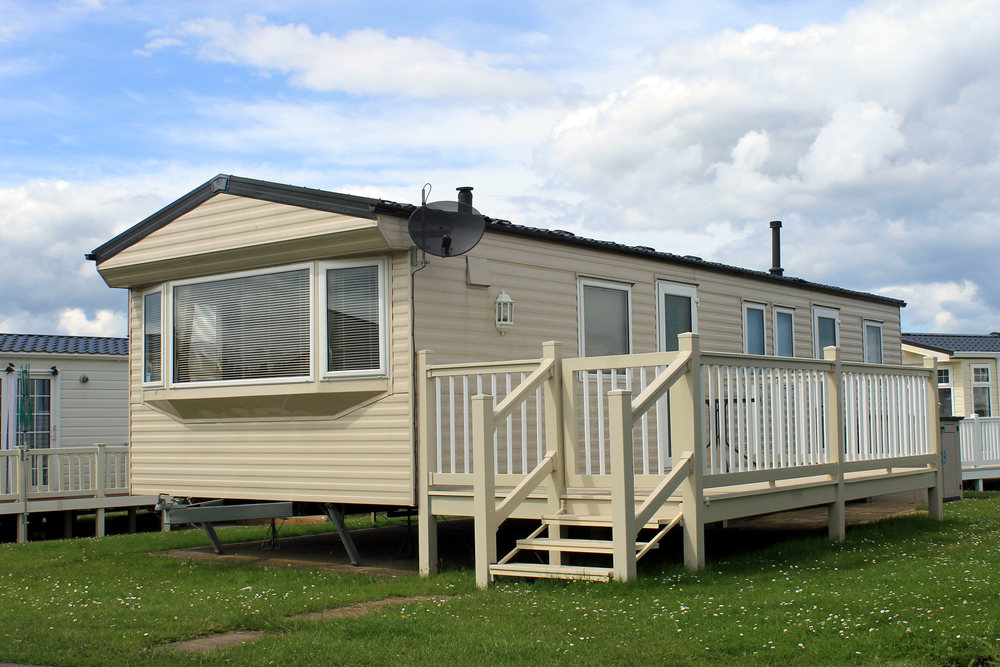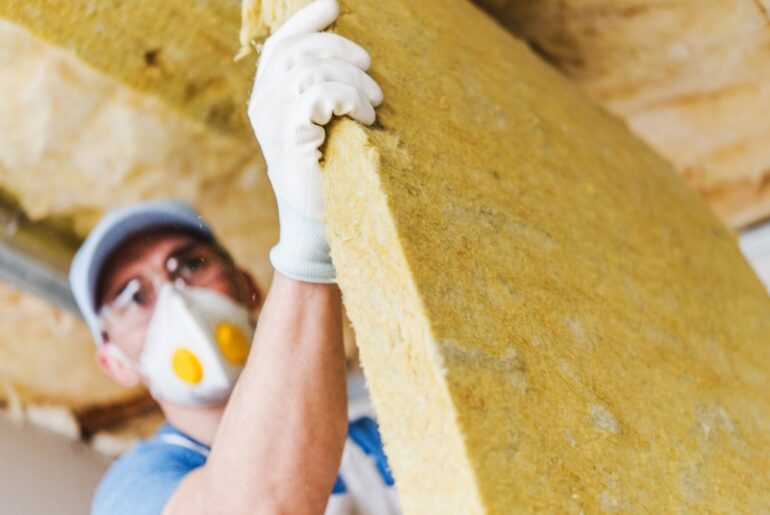The underside of your mobile home is exposed to the weather and road elements, so it’s important to take measures to insulate this area. It will help protect your mobile home from the cold in winter and the heat in summer.
However, before insulating your mobile home underbelly, you need to know the cost, selection criteria, and insulation method. Here’s a guide that covers all these aspects.
Can You Insulate Mobile Home Underbelly Yourself?
While you can insulate your mobile home’s underside yourself, you may encounter the following challenges:
- Choosing the wrong insulation may not protect your mobile home against the elements as intended.
- You may not achieve the R-value you desire.
- Not insulating all areas evenly can create drafts and cold spots in your home.
- You may not have the necessary tools or equipment.
However, it’s not impossible to insulate your mobile home underbelly yourself. You just need to be careful and take your time to do it right.
How Much Does It Cost To Insulate Mobile Home Underbelly?
The total cost of insulating the bottom section of your mobile home can be anywhere from $2,000 to $8,000. The type of insulation you choose will also affect the total cost. For example, spray foam insulation is more expensive than fiberglass batt insulation.
In addition to the cost of the insulation, you’ll also need to factor in the cost of the tools and materials you need to complete the job. Here are some costs to keep in mind:
- Tape measure – $5
- Caulking gun – $10
- Staple gun – $30
If you want to calculate the cost of insulation material, measure the underbelly of your mobile home first. For instance, fiberglass insulation costs around $0.88 to $1.64 per square foot.
If the underbelly of your mobile home is 1,000 square feet, you’ll need 1,000 square feet of insulation material. It will cost you between $880 and $1,640 to insulate the underbelly of your mobile home with fiberglass insulation.
On the other hand, spray foam costs $1.00 to $4.50 per square foot. If you want to insulate your mobile home underbelly with spray foam, it will cost you between $1,000 and $4,500.
Why Do You Need to Insulate Mobile Home Underbelly?
When insulating their mobile homes, most people only cover the vehicle’s top, sides, and ends. However, the underbelly is one of the most important areas to insulate. Here’s why:
Reduces Energy Bills
The most important reason to insulate the underbelly of your mobile home is that it will help reduce your energy bills. In the winter, heat rises, so if your underbelly is not insulated, all that heat will escape through your mobile home floor.
In the summer, the opposite happens. The heat from the sun will beat down on your mobile home’s roof and walls, causing the inside temperature to rise. If your underbelly is not insulated, this heat will travel through your floor and make your mobile home uncomfortable.
Keeps Pipes from Freezing
Another reason to insulate your mobile home underbelly is to keep the pipes from freezing. When water freezes, it expands, causing the pipes to burst.
An insulated underbelly will ensure your pipes are not exposed to cold air. In addition, it will make them less likely to freeze and burst.
Protects from Water Damage
Water can cause a lot of damage to your mobile home, especially if it seeps through the floor. An insulated underbelly will act as a barrier, protecting your mobile home from water damage.
An insulated underbelly is a must if you live in an area that gets a lot of rain or snow.
Makes Mobile Home More Comfortable
Insulating the underbelly of your mobile home will also make it more comfortable. If you travel long distances or live in a cold climate, an insulated underbelly will keep your mobile home warm in the winter and cool in the summer.
How To Insulate Mobile Underbelly Home Step-by-Step
If you’ve decided to insulate your mobile home underbelly yourself, you need to be careful. Here are step-by-step instructions on how to insulate a mobile home underside.
Step 1: Choose the Insulation Material
When choosing the insulation for your mobile home underbelly, you must consider the following factors:
- R-Value: The R-value is the measure of a material’s ability to resist heat flow. The higher the R-value, the better the insulation. If you live in a cold climate, you’ll want to choose insulation with a high R-value, such as vacuum-insulated panels or polyurethane.
- Climate: Since it’s a mobile home, you’ll need to consider the climate of the area you live in when choosing insulation. If you live in a hot, humid climate, you’ll want to avoid insulation that could trap moisture and lead to mold growth. In such cases, fiberglass insulation will be a good option. Meanwhile, loose-fill fiberglass also works well for colder climates since it has an R-value of 60.
- Budget: How much are you willing to spend on insulation? Your budget will play a role in which type of insulation you choose. If money is no object, spray foam insulation would be the best option since it has a high R-value and will create an airtight seal. However, fiberglass is the way to go if you’re on a tight budget.
Step 2: Gather Your Tools
After you’ve chosen the insulation material, you’ll need to gather the following tools:
- Tape measure
- Caulking gun
- Ruler or a level
- Scissors
- Stapler
- Utility knife
- Plywood sheets (optional)
Step 3: Measure the Area to Be Insulated
Using a tape measure, measure the area you’ll be insulating. Mobile homes are usually 24 to 26 feet wide, so you’ll need to measure the length of the underside.
Once you have the measurements, transfer them onto a piece of paper or the insulation material.
Step 4: Cut the Insulation to Size
Use a utility knife or scissors to cut the insulation material to the appropriate size. Wear gloves and a dust mask to avoid inhaling the fibers while cutting the insulation.
Step 5: Patch the Plumbing Leaks
Before you install the insulation, you’ll need to patch any plumbing leaks. Use a caulking gun to apply a generous amount of sealant around the leaky pipes.
Step 6: Repair the Holes
If the underside of your mobile home has any holes, repair them before installing the insulation. Use a piece of plywood or another sturdy material to patch the holes.
You can also use a caulk gun to fill small holes. The flex-mend tape also works well to cover small holes.
Step 7: Install the Insulation
The installation process will vary depending on the type of insulation you’ve chosen. For example, if you’re using fiberglass insulation, you’ll need to staple it onto the underside of the mobile home.
Meanwhile, follow the specific instructions on the can for spray foam insulation. If you’re working with polyurethane, you’ll need to apply it with a caulk gun. When you apply it by spraying, it can reach the smallest nooks and corners in your mobile home.
Do You Need to Insulate Other Parts of Mobile Home?
Besides the underside, you also need to insulate other parts of your mobile home to make it more energy efficient. These include the walls, ceilings, windows, and doors.
The common insulation materials used include fiberglass batt, cellulose, and spray foam. You can select the best insulation material based on your budget, climate, and the R-value you need.





